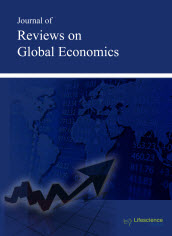jrge
Abstract - Optimal Active Energy Loss with Feeder Routing and Renewable Energy for Smart Grid Distribution
|
|
Abstract: Electric power is the main energy source for a modern society. Good management of electric power cycle is essential for a sustainable society. The electric power cycle is composed of Generation, Transmission, Distribution, and Consumption. Smart Grid (SG) is a system that integrated traditional grids with Information and Communication Technology (ICT). In addition, SG has the ability to integrate electrical power supply from both to main power substation and Distributed Generation (DG), which compensates for the power demand during peak times. However, SG still has a similar problem to the original grid in terms of active power loss, from electric current injecting through the transmission line. This paper solves the active power loss problem by feeder routing using the Adjusting Dijkstra’s Cost Method, follow by deciding the allocation position and sizing of DG by the use of Evolutionary Computing, namely Harmony Search (HS), Artificial Bee Colony (ABC), and Particle Swarm Optimization (PSO). The experiments evaluate the performance of the algorithm using power flow analysis, Backward / Forward Sweep Method, on the IEEE 33 bus system. From the experimental results, PSO provides the best performance. The overall active power loss in the cases of 3 DGs was reduced from 202.67 to 52.29 kW, representing a reduction of 74.20%.. Keywords: Minimal active power loss, Backward / Forward Sweep Method, Harmony Search, Artificial Bee Colony, Particle Swarm Optimization. |
Abstract - Demand for Narcotics in Thailand, with Policy Implications
|
|
Abstract: The paper examines the demand for narcotic drugs, based on Becker (1968), as purported rational behavior of human beings. The results from sampling surveys in eight provinces in Thailand in 2014, representing nationwide drug users/addicts, show that the demand for narcotics (amphetamines, ice drug, and marijuana) are price inelastic (between -0.533 and -0.701), as well as normal goods. The key econometric coefficients in models A and B are 0.192 and 0.0467, respectively, and an increase in income will lead to an increase in the demand for narcotics. In addition, factors affecting the demand for narcotics are the age and age squared of the user, friendship, family member relationship, social relationship, reasons for drug use, risk behavior, and expected punishment. Public policy implications are also proposed and analysed. Keywords: Price elasticity of demand, Narcotics, Amphetamines, Ice drug, Marijuana, Policy implications. |
Abstract - Computer Technology to Improve Medical Information in Bangkok, Thailand
|
|
Abstract: Building hospital applications based on services allow hospitals and other organizations to cooperate and make use of business functions. Hospital information systems that involve extensive information exchange across hospitals and organization boundaries, such as patient profiles, can easily be automated. Service-based applications can be constructed by linking services from various providers using either a standard programming language or a specialized workflow language. This paper reviews the use of computer technology which supports health services in Bangkok, Thailand by developing a survey of health services in hospitals, in which the focus is on the attitudes and competence of medical students and physicians, and the availability of health services equipment; and analyzing and providing guidance via a web service that supports health services. A prototype of a web application is created to simulate situations of the use of computer-based devices for supporting clinical operations, involving 12 medical doctors and 3 patients. Two cases are analysed to demonstrate different situations of the web service. In such situations, stakeholders are requested to query patient information and specify the documents. The experiments have been evaluated by considering straightforward criteria to perform activities with the prototype to determine how accurate the documents are requested and specified, and evaluate how the health service performs efficiently. Keywords: E-Hospital Systems, Hospital Application, Web Services, Medical Health Services. > |
Abstract - Heritage Tourism and Vibrant Life of the Baan Lao Community, Chao Phraya River, Bangkok, Thailand
|
|
Abstract: The reputations of primary and secondary tourist destinations are hierarchically created through its value to the nation. Prioritizing a conservation project and tourism development can have major differences. Values attached to a destination by inhabitants are different from those of tourists, and are often influenced by the promotional campaigns designed by authorized agencies. A primary destination is then worthy of promotion and conservation as it serves a nation’s purposes economically, socially and politically, while a destination that is not corresponding in such ways is usually disregarded. Koh Kret is an established primary tourism destination for domestic visitors, though not for international visitors. However, the Baan Lao Community can be developed as a secondary tourism destination for visitors to Koh Kret. Koh Kret and Baan Lao Community in Thailand are illustrations of significance and value. By understanding the Baan Lao community’s significance, value and values, it is an opportunity to develop the area as a secondary tourist destination, and help preserve the way of life of local inhabitants along the Chao Phraya River in Bangkok, Thailand. Keywords: Primary tourism destination, Secondary tourism destination, Koh Kret, Associated heritage value, Way of life, Chao Phraya River. |






















